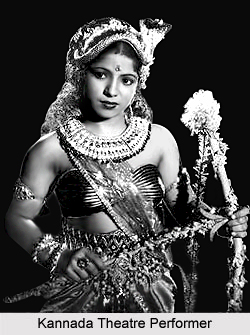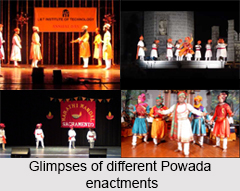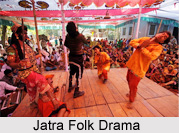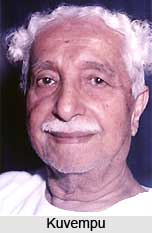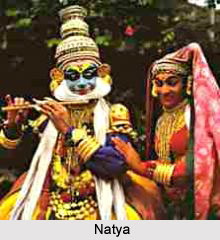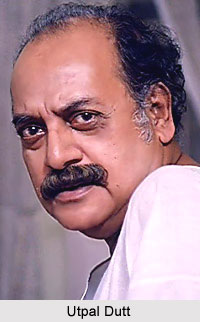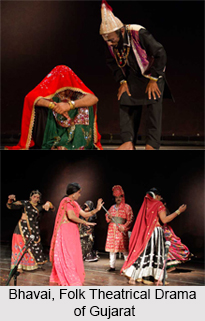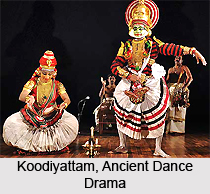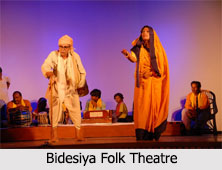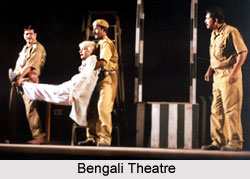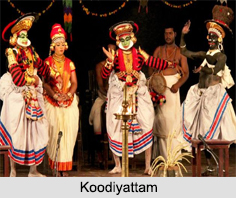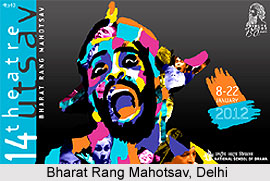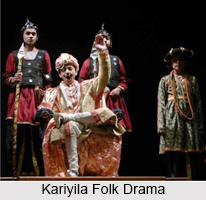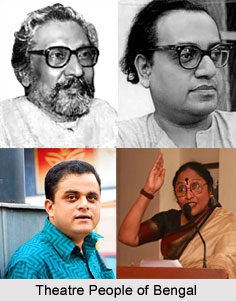Types of gaits are an important part of the Natyashastra. Different types of gaits are assigned to different characters in the dramatic performance. For the characters of superior or middling type, the posture to be assumed is Vaisnava Sthana. The characters should keep their chest raised in the Sama and Caturasra order. The shoulders should be at rest without raising them inordinately. The neck is gracefully displayed like that of a peacock. In the posture the actor should keep his feet apart leaving an inter space of two and a half Talas and the steps he has to take shall be four, two or one Tala according to his own measure.
The time taken for the steps shall be four or two Kalas or even one Kala. Superior characters takes of four Kalas, the middling one two Kalas and the inferior characters and women only one Kala. Three kinds of Layas (tempo) shall be adopted by the expert in the theatrical art befitting the Gait of the different characters. The Gati or gait of the Superior characters shall be Sthira (slow), that of the middling ones Madhya (medium) and that of the inferior characters Druta (rapid). The three tempos should be in accordance with the spirit of the characters.
A superior character raises his knee unto the hip in his natural gait. The actor then proceeds to a corner of the stage with graceful steps of the Parsvakranta Cari while the musical instruments are duly played. He takes five steps at the outset. Then he moves ahead placing left foot first and the right thereafter. There after he takes an abrupt turning and takes five similar steps towards the other corner of the stage. For the third time, he turns round and takes five similar steps towards the musical instruments. Thus he takes in all twenty one steps in the Course of these movements.
If the stage is of Vikrista type there are elaborate foot movements of the actors. In a square stage the foot movements are of the Caturasra type and in a triangular stage they are of the Tryasra type. When an actor walks in the company of his equals and takes level steps the Laya of his gait will be in accordance with his own rank adopting four or two Kalas or even one Kala. When an actor walks in the company of persons of the medium or inferior types, the Laya of the set of people will be in terms of four of two Kala as the case may be. The Gati of all the heaven-dwellers is preferably of Madhyama type. Those who are excessively haughty among them shall have the Gati at par with that of the Devas.
In the Gati of the characters in special cases the sponsors of the dramatic performance shall assign to the different characters i.e. Superior, medium and base or inferior. Gatis with suitable modifications based on their special condition. When conditions other than normal ones prevail their Gatis should have the duration of two Kalas or one Kala. While a Superior Character is assigned a gait of four Kalas, a middling character has the Gati of one Kala and an inferior character has the Gati of half a Kala. In this manner one should make suitable reduction of Kalas for special cases.
The Gati that pertains to superior persons is not to be applied to the Gati of the middling type and that of the middling characters is not to be applied to that of the inferior type. In the case of one distressed with fever, one overwhelmed by hunger, one weary due to penance, one who is frightened, when there is dismay, dissimulation or uneasiness, when love in separation is displayed, the Gati shall be very slow in Laya with duration of more than four Kalas. In the case of characters with predominance of anxiety it shall be of four Kalas in duration. In the case of Asvasthakamita (one afflicted by uneasy and concealed love), panic, terror, agitation joy, action done hastily hearing of unpalatable news, insult, seeing a miracle, distressed condition, searching for the enemy, pursuit of a guilty person, chasing a ferocious creature, steps of two Kalas duration should be recommended by sensible actors.
Gracefulness marks the Gait in ordinary expressions and activities of love. The Dull (the lady conveying the messages of lovers) shows the oath to the lover as both of them enter the stage. He acts his part through Suca (i.e. Idea is conveyed first through Bhava and Mudra. Verbal representation follows it). Lovely clothes, sweet scents jewels and garlands of fragrant flowers should adorn him. He adopts the Atikranta Cari for walking thus. The movement of the hands follow that of the feet. When the foot falls the hand is raised and vice versa. When there is Pracchanna- kamita (Concealment of love), the lover is expected to walk during the night. Before that he dismisses the attendants and puts out the lamp. He is scrupulously dressed in accordance with the time of the day but not so particular with the ornaments. One with concealed amorous activities should walk with slow and silent steps. He is cautiously wary of the sounds heard but not a white less in his ardour he should be circumspect enough to look around. In his suspicion his body trembles and he falters frequently.
The Gati of persons moving about in the darkness or blind men should consist of the feet being drawn over the ground. Curnapada steps mark the Gati of persons who is riding a chariot. The actor playing the part of a chariot rider takes up the bow with one hand and the pole of the chariot with the other. The charioteer remains busy with the whip and the reins. The actor enters the stage with quick and simple steps. The Gati of one in aerial chariot should be similar to the one of those riding in ordinary chariots. One who is ascending holds his body up and one who makes a decent have the opposite movement. If one descends from the sky his Gati is also similar. It consists of straight and wide, high and low, crocked and round and round. One falling from the sky has recourse to Apaviddha arms, the ends of the clothes being scattered about and the eyes fixed to the ground.
Sometimes the actor has to imitate the walk down into the river or the climb on to some mounds etc. The climbing in the place should be performed through Atikranta Padas. After holding up the body the actor places the steps in the flight of stairs. When coming down from those places the actor keeps his body slightly bent. While climbing the hills too the same Gati as in the case of ascending the flights of stairs in the palace is to be employed but the limbs are to be lifted up. The hands extend support to be lifted up. The hands extend support to the legs.
The same steps are employed in depicting the descent from the trees or going down into a river. The Gati in the water is based on the quantity of water therein. When the quantity of water is less the actor exhibits tucking up of the clothes and when there is plenty of water the hands are thrown on the sides keeping the fore part of the body slightly bent. When the person is carried away by the current the actor stretches out his arms one by one to push the water forward repeatedly. In the course of these activities all his limbs are busily engaged and there is water-filled mouth.
The Gati of the lecherous Vita should necessarily be graceful. The actor represents that by putting forward the Akuficita feet within one Tala and displaying Khataka and Vardhamana hands endowed with Sausthava. The hands should follow the feet. The movement of Chamber loin is in accordance with his age and other conditions. If he is not old his feet are kept raised half a Tala high. He then takes simple steps and walks making his limbs appear as though he is treading upon mind. If he is an old man he walks with quivering body raising the feet slowly and breathing deeply at every step. When a lean person walks he takes slow steps. A person suffering from fever or other ailments, a person tired due to penance or starvation walks with lean, depressed belly; feels difficulty in breathing; has feeble voice, depressed cheeks; eyes with no glow; the movement of the hands and feet is very slow; there is tremor in the limbs; they appear afflicted. A Long distance hiker walks with slow steps, limbs tend to narrow down and the knees rub against each other. A stout person walks with feet raised very slowly. In case he takes hurried steps he will breathe profusely and sweat excessively due to fatigue.
Thus, the Natyashastra lays great stress on the gait or gati of the characters.







